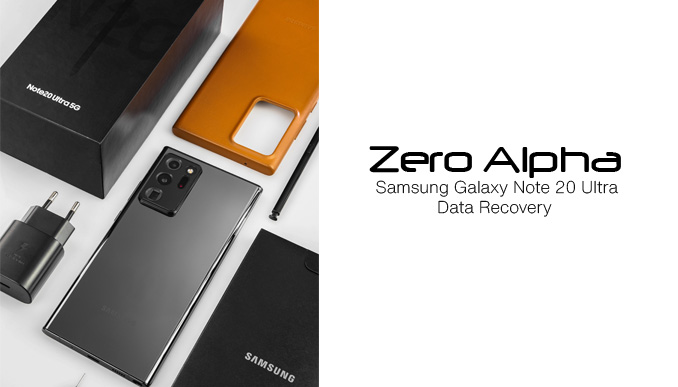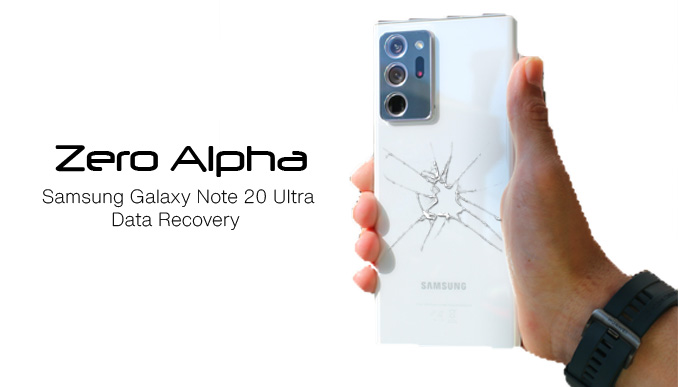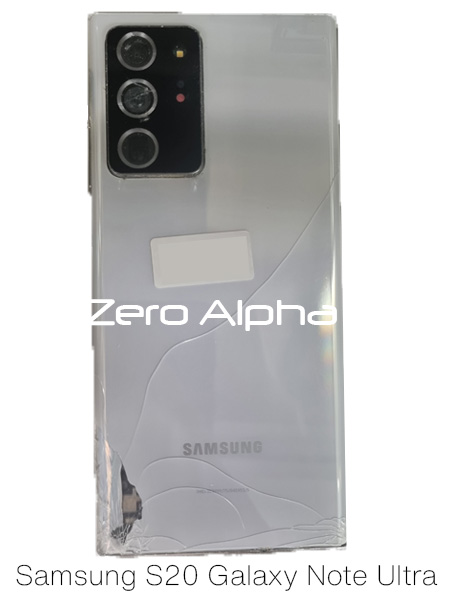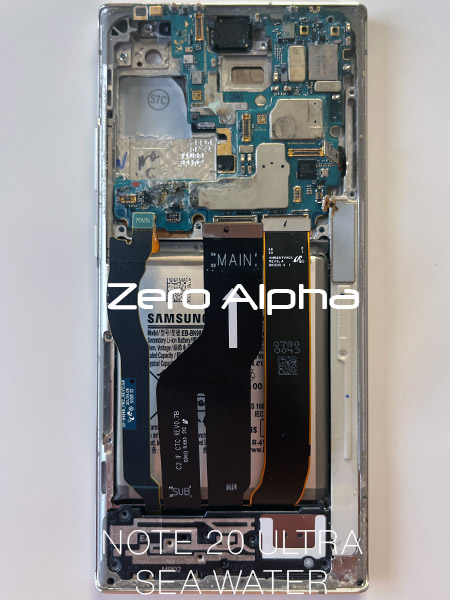Samsung Galaxy Note 20 Ultra Data Recovery
The Samsung Galaxy Note 20 Ultra is available in different variations depending on the region and network compatibility. Here are some of the common variations:
-
SM-N985F/DS: This model is the international dual-SIM variant of the Samsung Galaxy Note 20 Ultra. It supports dual SIM cards, allowing you to use two different phone numbers on the same device.
-
SM-N986B/DS: This model is another international variant of the Samsung Galaxy Note 20 Ultra. It also supports dual SIM functionality and is compatible with various networks worldwide.
-
SM-N986U: This model is the variant specifically designed for the United States market. It is optimized to work with major carriers in the US and supports the necessary network bands for reliable connectivity.
-
SM-N986W: This model is the Canadian variant of the Samsung Galaxy Note 20 Ultra. It is tailored to meet the network requirements of Canadian carriers, ensuring seamless communication and data connectivity.
-
SM-N986N: This model is the Korean variant of the Samsung Galaxy Note 20 Ultra. It is designed to cater to the specific needs of the Korean market, including support for local network bands and additional features tailored for Korean consumers.

These variations may differ slightly in terms of supported network bands, software optimizations, and bundled accessories, but overall, they offer the same powerful features and capabilities of the Samsung Galaxy Note 20 Ultra.
The most common model of the Samsung Galaxy Note 20 Ultra in Australia is the SM-N985F/DS. This variant offers the following characteristics:
-
Display: The Note 20 Ultra features a large 6.9-inch Dynamic AMOLED display with a resolution of 1440 x 3088 pixels. It supports HDR10+ and offers vibrant colors, deep blacks, and excellent contrast.
-
Processor: It is powered by Samsung's Exynos 990 octa-core processor (in some regions) or Qualcomm's Snapdragon 865+ octa-core processor (in other regions). Both variants provide smooth performance and efficient multitasking.
-
RAM and Storage: The device comes with 12GB of RAM, ensuring smooth operation even with multiple apps running simultaneously. It offers generous internal storage options, including 128GB, 256GB, and 512GB, which can be expanded further using a microSD card.
-
Camera: The Note 20 Ultra boasts a versatile triple-camera setup on the rear, consisting of a 108MP wide-angle lens, a 12MP ultra-wide-angle lens, and a 12MP telephoto lens. It supports features like 5x optical zoom, 50x digital zoom, and advanced image stabilization. On the front, there's a 10MP selfie camera.
-
S Pen: The Note series is renowned for its S Pen stylus, and the Note 20 Ultra is no exception. The S Pen offers improved responsiveness and enhanced features like air gestures, allowing you to control certain functions without touching the screen.
-
Battery: It is equipped with a 4,500mAh battery that supports fast charging, both wired and wireless. The device also supports reverse wireless charging, enabling you to charge other Qi-compatible devices.
-
Connectivity: The Note 20 Ultra supports 5G connectivity (where available) for faster download and upload speeds. It also features NFC, Bluetooth 5.0, Wi-Fi 6, and USB Type-C for versatile connectivity options.
-
Operating System: The device runs on Samsung's custom user interface called One UI, which is based on the Android operating system. It offers a user-friendly interface, a range of customization options, and access to a vast ecosystem of apps and services.
These characteristics make the Samsung Galaxy Note 20 Ultra a powerful and feature-rich smartphone, ideal for productivity, multimedia consumption, and creative tasks.

Factors Affecting Data Recovery from Samsung Galaxy Note 20 Ultra: What You Need to Know
Several factors can prevent or hinder data recovery from a Samsung Galaxy Note 20 Ultra. These include:
-
Physical Damage: If the device has suffered severe physical damage, such as a shattered screen, water immersion, or fire damage, it may be challenging to retrieve data. In such cases, professional data recovery services may be required.
-
Encryption: If the data on the device is encrypted and the encryption key is unavailable, it can pose difficulties in recovering the data. Encryption is a security measure that protects sensitive information, but it can also make data recovery more challenging.
-
Overwriting Data: When new data is saved or written onto the device's storage after data loss, it can overwrite the previously deleted or lost data. The more the device is used after data loss, the higher the risk of permanent data loss. Therefore, it is crucial to stop using the device and seek professional assistance as soon as possible.
-
Software Corruption: If the device's software becomes corrupted, it can lead to data loss or inaccessibility. In such cases, data recovery may require specialized software tools and techniques to repair the software and retrieve the data.
-
Factory Reset: Performing a factory reset on the Samsung Galaxy Note 20 Ultra erases all data and restores the device to its original settings. If a factory reset has been performed, it becomes more challenging to recover data directly from the device. However, data recovery experts may still be able to retrieve data through advanced techniques.
-
User Mistakes: Accidental deletion, formatting the device without a backup, or improper handling of the device can also lead to data loss. It is important to be cautious and take regular backups to minimize the risk of data loss.
In any data loss situation, it is recommended to immediately stop using the device, avoid attempting DIY data recovery methods, and consult professional data recovery services like Zero Alpha. Their expertise and specialized tools can increase the chances of successful data recovery from the Samsung Galaxy Note 20 Ultra, even in challenging scenarios.
Water Damage Data Recovery

When a customer brought in a water-damaged Samsung Galaxy S20 Ultra at Alpha Data Recovery, it presented a challenging scenario for data retrieval. Water damage poses a significant threat to electronic devices, potentially causing irreparable harm to internal components. The customer's Galaxy S20 Ultra, a sophisticated and feature-rich smartphone, had experienced submersion, leading to concerns about data loss. The skilled technicians at Alpha Data Recovery, equipped with specialized tools and expertise, undertook a thorough assessment of the device. Employing advanced recovery techniques tailored for water-damaged electronics, they meticulously addressed issues such as corrosion and electrical damage. Through a dedicated process, the team successfully recovered the customer's crucial data, showcasing Alpha Data Recovery's commitment to salvaging valuable information even in challenging situations.
Samsung S20 Galaxy Note Ultra Sea Water Damaged Data Recovery
Water damage to electronic devices, such as the Samsung Galaxy S20 Ultra or Note series, can be a challenging issue to address. When exposed to sea water, the potential damage is exacerbated due to the corrosive nature of salt water. Here's a brief overview of the challenges and potential steps for data recovery:

Challenges of Sea Water Damage:
-
Corrosion: Sea water contains salts and minerals that can lead to corrosion of internal components, including the motherboard, connectors, and other vital parts of the device.
-
Short Circuits: When sea water infiltrates the device, it can cause short circuits, disrupting the normal functioning of the electronic components.
-
Data Loss Risk: The primary concern with water damage is the potential loss of data stored on the device, including photos, documents, and other personal information.
Steps for Data Recovery:
-
Power Off the Device: If the device hasn't already been turned off, power it down immediately to minimize the risk of further damage.
-
Do Not Charge: Avoid attempting to charge the device as it may cause additional harm. Electricity and water damage are a dangerous combination.
-
Remove SIM Card and Memory Card: Take out the SIM card and, if applicable, the memory card to prevent further damage to these components.
-
Dry the Device: The phone must be opened and cleaned out immediately with the battery disconnected. Don't do dumb internet stuff like putting your phone in rice.